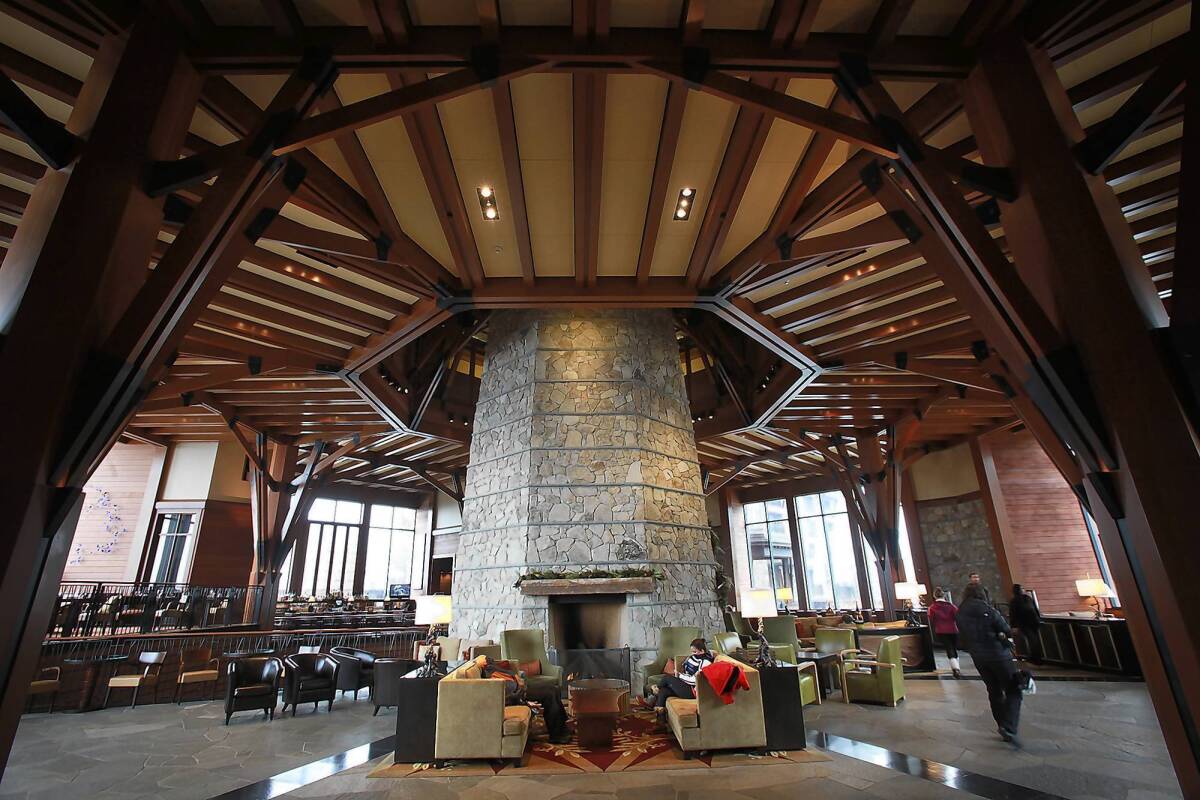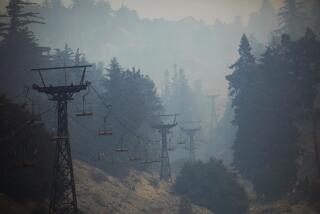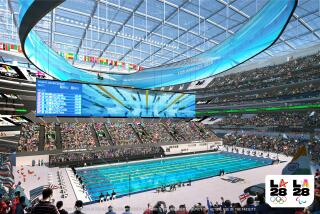Lake Tahoe ski resorts splurging on upgrades and expansions

The nation’s ski industry suffered an epic wipeout last season, with the least snowfall in decades and one of the steepest drops in skier visits on record.
But instead of retrenching, resort owners are opening their wallets wide on upgrades and expansions.
One of the biggest jumps in spending is taking place at the snow-covered peaks around Lake Tahoe, where resorts are in the midst of a spending splurge of more than $100 million over the next five years.
The flurry of spending began two years ago and includes a newly built on-mountain lodge at Northstar California and a mile-long terrain park at Alpine Meadows, plus new lifts and upgrades to snow-making equipment at several resorts. The Olympic House lodge at Squaw Valley resembled a tired, aging casino before it recently underwent a $2-million face-lift.
“We are putting our shoulder into this,” said Andy Wirth, president and chief executive at Squaw Valley. “We know that last year was an anomaly.”
Video chat: Tahoe ski resorts get a makeover
Although the nation’s ski mountains enjoyed bountiful snowfall in the 2010-11 season, last year they suffered the lowest snowfall in 20 years, forcing half of resorts to either open late or close early. They drew only 51 million skier and snowboarder visits, a 15.8% decline from the previous season, the second-biggest year-over-year decline on record, according to the National Ski Areas Assn., a trade group for resort operators.
“We know the snow is going to come back, and we want to be ready and not have to play catch up,” said Nadia Guerriero, general manager of the Village at Northstar, who has managed a $3-million face-lift that includes new outdoor furniture, fire pits and a concert stage next to the village skating rink.
Most of the expenditures come from the deep pockets of two Colorado companies, Vail Resorts, which also owns and operates popular resorts in Colorado and Wyoming, and KSL Capital Partners, a private equity group in Denver. Combined, the two companies own or operate five of the biggest resorts around Lake Tahoe.
Despite erratic snow seasons, Vail Resorts and KSL say they are confident in the future of snow sports and see Lake Tahoe as an underdeveloped gem, in proximity to millions of potential resort visitors from the Bay Area, Sacramento and Southern California.
“Lake Tahoe is a place of unparalleled natural beauty with large, dynamic and successful markets in San Francisco, Sacramento and Reno,” said Eric Resnick, a managing director at KSL. “We feel we have the ability to invest and upgrade the resorts and take full advantage of these assets.”
Vail Resorts first moved into the Lake Tahoe area with the purchase of Heavenly ski resort in 2002. The company took over Northstar in 2010 and Kirkwood in February.
KSL acquired Squaw Valley ski resort in 2010 and took over Alpine Meadows in 2011, combining the operations to offer skiers 44 lifts and 270 trails on more than 6,000 acres of land.
For the last few years, Lake Tahoe resort owners have been discussing making a bid to host the 2022 Winter Olympics while making capital improvements crucial to winning over the International Olympic Committee, which chooses the host city for the Games.
But the U.S. Olympic Committee decided this summer that it would not bid on the 2022 games, opting instead to wait for the Summer Games of 2024 or Winter Olympics of 2026.
Even if Lake Tahoe doesn’t host a Winter Olympics, Vail and KSL officials say they see the resort upgrades as smart investments sure to pay off in the long run.
Only a year after Vail Resorts spent $63 million to take over operations at Northstar in 2010, the company began to spend upward of $30 million for a new lodge with 700 seats for drinking and dining, a new high-speed chairlift and two intermediate trails on the backside of the mountain. Snowboarding legend Shaun White was even tapped to design a 22-foot halfpipe.
At the new Zephyr Lodge, which opened last December, Bill Rock, vice president and chief operating officer at Northstar California, pointed to the self-serve salad bar, the food counter that serves Asian fusion dishes and the wall of windows that look out on the snow-capped Sawtooth Ridge.
“Before we built this lodge there was no place to get food up here,” he said. “Our guest survey scores have been going up ever since Vail Resorts came in.”
Across the lake, Heavenly ski resort completed building a similar on-mountain lodge, Tamarack, in 2010.
The ski resorts are not alone in spending in Lake Tahoe.
In 2009, the Ritz-Carlton Hotel Co. invested $300 million to open a six-story, 170 guest-room luxury hotel at the Northstar resort, the only five-diamond, AAA-rated hotel around the lake.
“Lake Tahoe is in the backyard of the San Francisco Bay Area and only a two-hour flight from Southern California,” said Steven Holt, a spokesman for the Ritz-Carlton, Lake Tahoe. “There is a huge population of ski and snowboard enthusiasts, and this creates a luxury resort in their backyard.”
Not everyone is happy about the big-money investments. Some longtime skiers fear the resort upgrades will lead to higher lift ticket and season pass prices. Those prices have already increased $5 to $50, depending on the mountain.
Steve Grevstad, a Grass Valley resident and former president of the Bota Bagger Ski Club in Truckee, Calif., said he worries that higher lift ticket prices will make it too expensive for families to ski.
“If you have a family with two kids, you are going to come up there and kiss a $1,000 bill goodbye,” he said. “They are not going to have the discount tickets in the future the way they had in the past.”
But other skiers welcome the investments, saying the changes will entice them to visit the resorts more often.
“As an outsider who skis there, I welcome the improvements,” said Ann Lawson, a veteran skier and trip organizer for the Pasadena-based Grindelwald Ski Club. Because of the improvements proposed at Northstar, she said she is tempted to visit the resort this spring.
“I feel Vail Resorts is one of the top-notch owners in the United States.”
Ski resorts across the country are also doling out more on capital improvements, but not to the same degree as the Lake Tahoe resort owners.
In the 2011-12 season, the nation’s resorts invested a combined $300 million on capital improvements, an 8% increase over the $277 million spent the previous year, according to the National Ski Areas Assn.
The dark cloud on the horizon for the ski industry is the potentially damaging effects of climate change on future snow seasons.
National Ski Areas Assn. spokesman Troy Hawks said ski operators are taking action by cutting greenhouse gas emissions at their operations but also by investing heavily in snow-making equipment to keep their mountains white even when Mother Nature won’t cooperate.
Squaw Valley, host of the 1960 Winter Olympics, invested $4 million in snow-making guns and equipment over the summer, plus another $4 million on new trail groomers over the last two years.
“The conditions last year really made it easy to sell such investments to our owners,” said Wirth, the Squaw Valley CEO.
But the snow-making investments are only a small portion of the $38 million KSL has already spent on Squaw Valley and the neighboring Alpine Meadows. The company is expected to spend an additional $32 million on the two resorts by 2015.
Squaw Valley has long been known for its steep skiing, most notably the runs around its 8,200-foot KT-22 peak. But over the last 20 or 30 years, Wirth said, the resort itself has languished because little has been spent on upgrades.
Until recently, he said, the main Olympic House lodge looked like a 1970s-era, low-rent casino. The ground floor of the lodge featured checkerboard carpeting, bare-bulb lighting and, instead of chairs, backless benches.
The resort has launched a $2-million face-lift for the lodge that will include plush armchairs, soft lighting, ottomans, coffee tables and fireplaces. The upgrade should be completed in December, Wirth said.
“The easier thing would have been to pull back after the year we just had,” he said. “Instead, we are pushing forward.”
More to Read
Inside the business of entertainment
The Wide Shot brings you news, analysis and insights on everything from streaming wars to production — and what it all means for the future.
You may occasionally receive promotional content from the Los Angeles Times.










